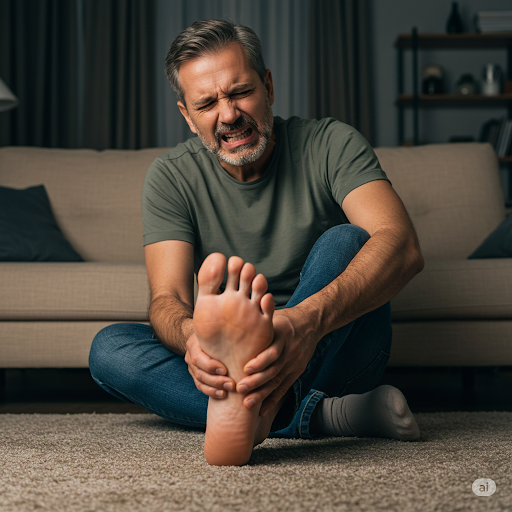The Curious Case of the Foot's Mechanics: When Biomechanics Goes Wrong
The Curious Case of the Foot's Mechanics: When Biomechanics Goes Wrong
Fri Jun 13 2025The human foot, a complicated structure comprised of 26 bones, 33 joints, and numerous muscles, tendons, and ligaments, serves as the foundation for upright posture and movement. The intricate interplay of these components dictates our foot mechanics, enabling us to walk, run, and maintain balance. However, subtle deviations in alignment or function within the feet can disrupt this delicate biomechanical system, potentially leading to a cascade of seemingly unrelated issues throughout the body that require attention at our surgical hospital in North Houston.
The Foundation's Influence: How Foot Alignment Affects the Kinetic Chain
The way our feet contact the ground has far-reaching implications for the alignment and function of the structures above. Improper foot mechanics, such as excessive pronation (inward rolling of the foot) or supination (outward rolling), can alter the biomechanical forces transmitted up the kinetic chain. This altered transmission can influence the alignment of the ankles, knees, hips, and even the spine, potentially contributing to discomfort and dysfunction in these areas.
Subtle Misalignments, Widespread Consequences
Seemingly minor misalignments within the feet can have surprisingly widespread consequences. For instance, subtle imbalances in the arches can affect the way weight is distributed across the foot, leading to increased stress on specific ligaments and tendons. Over time, this altered loading pattern can contribute to the development of conditions such as plantar fasciitis (heel pain), Achilles tendinitis, shin splints, and even knee or hip pain. The interconnectedness of the musculoskeletal system means that a problem at the base can create compensatory patterns higher up.

Functional Issues and Their Systemic Impact
Beyond structural misalignments, functional issues in foot mechanics can also have a systemic impact. Limited range of motion in the ankle joint, for example, can affect gait patterns, forcing other joints to compensate and potentially leading to overuse injuries. Weakness in the intrinsic muscles of the foot can also compromise stability and contribute to abnormal movement patterns during activities. Addressing these functional limitations can be crucial in alleviating not only foot pain but also related discomfort in other areas of the body.
Seeking Professional Evaluation for Foot-Related Issues
Recognizing the intricate link between foot mechanics and overall musculoskeletal health is essential for effective diagnosis and management of various pain conditions. Podiatrists, physicians in the foot and ankle, are uniquely qualified to assess biomechanical function and identify subtle misalignments or functional limitations that may be contributing to pain elsewhere in the body.
At TOPS Surgical Specialty Hospital, experienced podiatrists offer comprehensive evaluations and personalized treatment plans for a wide range of foot and ankle conditions. The surgical hospital in North Houston provides access to varied diagnostic and treatment modalities. If you are experiencing persistent pain in your feet or suspect that your foot mechanics may be contributing to discomfort elsewhere, consulting with a podiatrist is a crucial step towards addressing the root cause of your symptoms.
Learn more about TOPS Surgical Specialty Hospital’s podiatry services. You can also explore our treatment options and then scroll to the bottom of the webpage to find the right podiatrist near you.